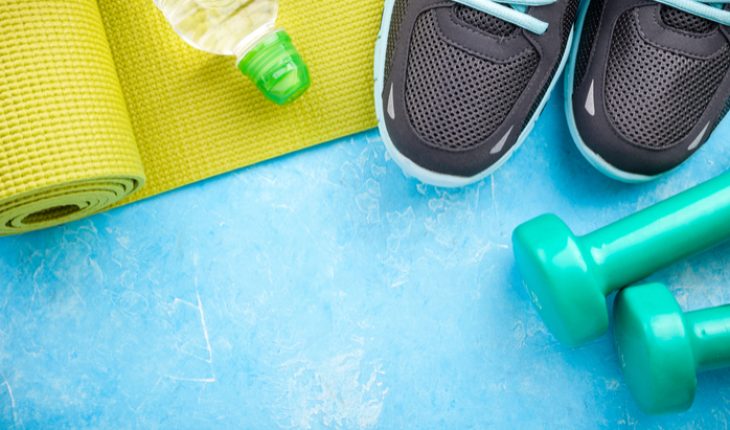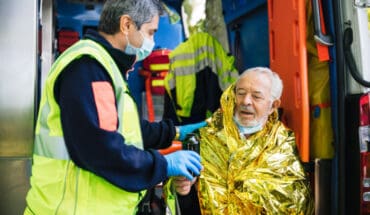Gyms are beginning to reopen after the covid-19 lockdown, which is great news for our physical and mental health. Many people have been regularly exercising at home throughout lock-down and may choose to continue doing this. Unfortunately, there has been a rise in runners experiencing hip and knee problems when they have been over-exerting themselves whilst exercising. Accidents and injuries can happen when exercising and sports professionals are best placed to guide you to maximise your exercise potential, whilst minimising your risks.
When choosing a personal trainer or booking into a gym or fitness class, ensure your instructor is fully insured and has received recent and appropriate first aid training.
It is really important to recognise quickly if you have experienced an injury, stop and give yourself time to rest and recover.
This article covers some of the most common accidents and injuries that can occur when exercising. We give clear advice on injury prevention, how to recognise that an injury may have occurred and first aid advice to avoid it worsening.
If you have any pre-existing medical condition, always get medical advice before increasing your exercise levels. Also ensure the exercise you are proposing is not contra-indicated in anyway by your condition.
Staying covid-safe at the gym
Before going to the gym, call them to understand the Covid-19 measures they have put in place. You might have to reserve a block of time in advance, with staff cleaning the facility between blocks. Ask about the facility’s cleaning and disinfecting policies and whether you’ll be able to use the locker room or bathroom.
Your gym will likely enforce social distancing by blocking access to every other cardio machine or by putting up barriers around equipment. Follow the gym’s guidelines and stay at least 6 feet (2 meters) away from other members. Clean equipment before and after using it. Some equipment that’s difficult to clean, such as foam rollers and yoga blocks, might not be available.
If you’re at higher risk of serious illness, you might consider waiting to return to the gym. Ask if your gym offers virtual classes or training.
Always ensure you warm up before exercising:
Many injuries occur purely because of taking short cuts and failing to warm up. Never start vigorously exercising without first warming and stretching your muscles. Otherwise, it is extremely common to end up with strains, sprains and pulled muscles.
If you haven’t exercised for a while, be realistic and build up the extent of your activity, slowly and steadily.
It may be sensible to invest in a heart monitoring device. You will be able to ensure you are not over-exerting yourself. If you feel unwell at any point when exercising, slow down or stop and give yourself time to recover.
The American Academy of Orthopaedic Surgeons state that strains and sprains are the most common causes of reported exercise related injury – particularly in the joints and back. Our backs are becoming weaker due to sitting too long at computers and poor posture. It is important to warm up thoroughly and exercise in a manner that does not put additional strain on our backs and other muscles.
Wear suitable clothing, both for your chosen exercise and for the weather:
UK weather can be temperamental. If exercising outside, ensure you have appropriate layers for all eventualities.
Dress for comfort, temperature, and prevention of friction injuries (such as chafing).
Ensure you have appropriate, comfortable clothing for whatever exercise you have opted for. If unsure as to what you need, check with the class organiser, your personal trainer, or look online for advice from an overseeing organisation.
Remember, whilst you’re running or exercising, you’ll be warm. However, as soon as you stop, you’ll cool down quickly. Ensure you have additional clothes to put on for when you finish.
Footwear:
Avoid lengthy runs or exercise in new trainers as otherwise you may well suffer blisters. Wear them in at home first – your feet must be comfortable and familiar with the shoes. Also make sure that the socks you choose are comfortable and fit well. In case there is rain forecast or roads are wet if you are running, ensure your shoes have sufficient grip.
If you are walking to an exercise class or the gym in your trainers, ensure they are not wet and slippery when you start the class.
Nipple bleeding and chafing:
If you are prone to chafing when running, apply petroleum jelly or anti chafing talc. It may be helpful to cover your nipples with plasters, if they bleed when training; wash and dry them carefully and then cover with a breathable plaster. Sometimes, nipple bleeding may be due to more serious problems. If in doubt, consult your doctor.
Blisters:
If you get a blister and the skin is still intact, do not pop it. Cover with a proper blister plaster and ensure there are no wrinkles in socks that are contributing to the rubbing.
If the blister is broken or likely to break; cover with a clean, dry, non-adhesive dressing that extends well beyond the edges of the blister. Alternatively apply a blister plaster.
To avoid blisters, ensure you are wearing shoes that are worn in and comfortable. If you need any plasters or help during the race, stop at one of the many first aid points – they should have plasters available.
Remain hydrated, but don’t drink too much:
You need to drink sufficient amounts of fluid to stay hydrated. However, drinking too much or too fast can cause hyponatraemia and make you seriously ill. Initial symptoms of hyponatraemia are similar to dehydration, but this lack of sodium and salt imbalance can cause seizures or a coma. In fact, consuming too much water too fast is one of the most dangerous things a long-distance runner can do, especially just before running. Instead, take small amounts of fluid on a continual basis.
Sports drinks are thought to be better than pure water for runs longer than an hour, as they help you to maintain your salt balance. Drink small amounts of these regularly during your run but avoid drinking for 45 minutes prior to a really long run. Many people advise drinking a gel within the first few miles. However, if you drink these once you are struggling, it may make you feel sick.
Cramp:
Cramp is a common problem for runners caused by the build-up of lactic acid in the muscles, but this can be avoided by maintaining sufficient levels of salts and fluids and remaining well hydrated. Drinking sports drinks can help and if you are prone to cramp, include salt in your normal diet a few days prior to the long runs. Warming up properly is also particularly important if you regularly suffer from cramp.
If you have diabetes:
If you’re diabetic, watch out for excessive sweating, confusion, drowsiness or faintness as these can indicate hypoglycaemia. It is especially important that diabetics consume glucose rich snacks at regular intervals to maintain their blood sugar levels.
They should carry glucose pastels or jelly sweets with them, along with longer acting carbohydrates.
Diabetics should also pay particular attention to cuts and blisters as they can take longer to heal and are more likely to become infected. If concerned, they should seek medical advice promptly.
If you are asthmatic:
It is really important you have your blue reliever inhaler with you at all times. Even if you haven’t experienced an asthma attack in years, exercise (particularly in cold air) can induce an attack.
When training in a group or with a personal trainer; always let them know if you have any medical conditions and ensure they are confident to help you if you experience a problem.
The importance of a cool down:
Just as you take time to warm up and stretch thoroughly before you train, don’t forget to stretch as you cool down too, with further stretches when you have finished.
Heat exhaustion:
If you are running or exercising on a hot day and you begin to feel sick, get a headache or cramps, feel dizzy and sweaty; you may be suffering heat exhaustion. Heat exhaustion is serious, so it is important that you get help as soon as possible. If you are training, lie down in a shady spot with your legs raised, take regular sips of a sports drink and ideally call someone to come and be with you and get medical advice.
If you are doing a long run and develop the symptoms of heat exhaustion, listen to your body and rest for a while.
Sprained ankle:
Don’t be try and continue to weight-bear on an injured ankle. Listen to your body and seek help. Rest and apply a supportive bandage and a wrapped ice pack. If symptoms get worse, or don’t improve, seek medical advice. It may be possible you have broken a bone, you will need an x-ray to confirm this.
Knee joint injuries:
If you injure your knee; lie down carefully supporting your knee in a relaxed raised position. Do not try to walk on your injured leg or straighten your knee.
Don’t eat or drink anything in case you need an anaesthetic and seek medical attention quickly.
- What is a seizure? - 13th March 2025
- Febrile Convulsions and Seizures in Children - 13th March 2025
- Why women are less likely to receive CPR or survive cardiac arrest - 6th March 2025






